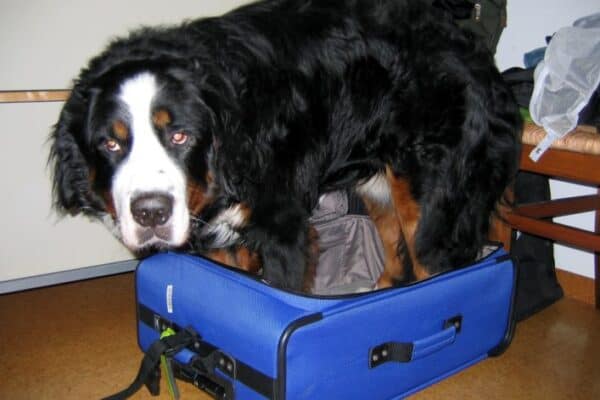
Important Corrections About Flying With Your Dog
I received a most informative email today, right on the heels of the most recent podcast of the DOG TALK show in which Dr. Nick Dodman talked about the (mis)use of tranquilizers for dogs when they are traveling.
I received this detailed and well-informed rebuttal to several of the points that came up in our interview from a pet travel professional. Joe, who’d had a pet travel service for many years and transported close to 500,000 animals before selling the company, said they never had a loss or injury during that time. He wanted to dispel some of the extreme warnings made in the radio interview and thinks everyone should be reassured that there are many regulations in place to protect animals being flown.
Here are some of Joe’s points about the protections in place to fly with your dog:
- Pet transportation regulations for both the owners and the airlines have become very tough in recent years. Live animal compartments are inspected and verified to be in order before each flight.
- The compartments in which the animal crates are secured are heated or air-conditioned the same as the passenger cabins; the air is circulated to prevent air borne health issues.
- The temperature consideration of whether an animal can be flown is not based on the live animal compartment conditions inside the plane, but rather on the outdoor temperature on the tarmac. If the external temperatures are extreme, the airline will not allow the animals to be transported. However, the temperature in the aircraft would nevertheless be perfectly suitable.
- In Joe’s experience, there is only one airline that has the proper equipment for animals to travel without having concerns about temperatures on the ground, because they have climate controlled ground service equipment for the animals. That airline is United.
- In regards to tranquilization, it is against federal law to use drugs on any animal introduced for transport, unless there is a certified licensed vet traveling with the animal. The person presenting the animal must verbally confirm and sign a statement that the animal has not been drugged.
- If any animal dies in transit the animal will receive a necropsy. Should they learn the animal has been drugged, US Marshals can arrest the shipper.
- Airline employees are trained to look at the animals to check whether they are in any physical distress. For example, a pup that has a runny nose will be rejected from the flight. Also, each airline has emergency vets on call should they be needed. There are also professional kennel people to care for the animals should there be travel delay etc.
Joe also pointed out there are many steps to preparing a pet to fly by having the right equipment and taking the time to introduce the pet to his crate long before flying. My book The Dog Bible has a section on pre-flight preparations in the travel chapter like introduction to the crate and spending relaxed time in the crate at home before the flight. One of the simplest ways to do this before you know you’re going to travel is to bring the crate with a kennel pad into your living room or bedroom, prop the door open,and throw a few tasty treats in there every so often. [Halo’s beef, chicken or salmon Liv-a-Littles work really well as positive reinforcers!]
---Tracie Hotchner
(Have a comment? Share it on Facebook.)
Halo is a sponsor on Radio Pet Lady Network, by our invitation.
photo credit: clg20171 Bernese Mountain Dog in a suitcase via photopin (license)

